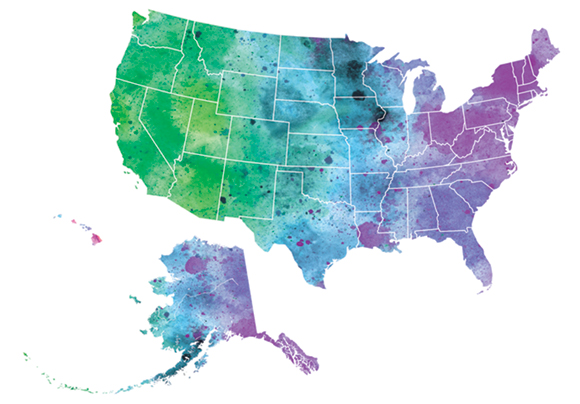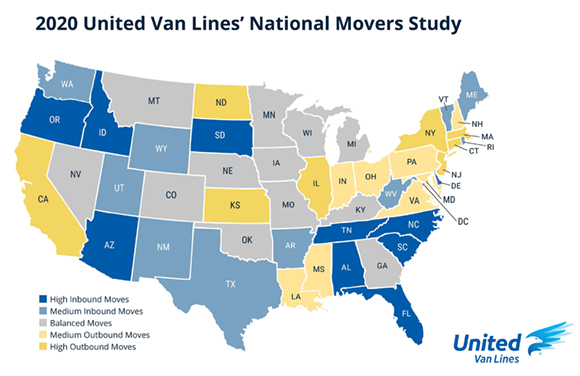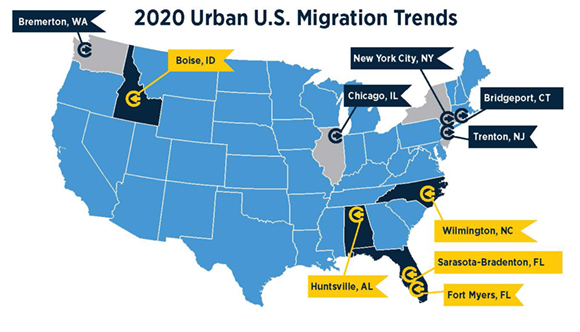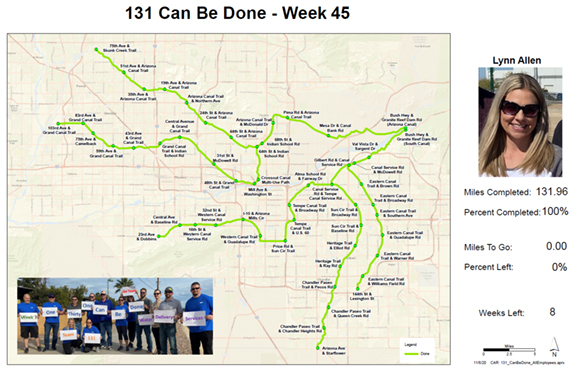| |
  
| FROM SITE SELECTION MAGAZINE, JANUARY 2021 ISSUE |
 |
RANKINGS
See which states lead the way in talent cultivation, training and attraction across seven U.S. regions.
|
|
 |
INVESTMENT PROFILE: NEBRASKA
Governor Pete Ricketts competes to win, and so do the people who work for him.
|
|
  |
UNITED KINGDOM
NTT in December opened its new “London 1” data center, in Dagenham, East London, where it’s headquartered, as part of a growing portfolio that includes five other data centers in the UK in Hemel Hempstead and Slough. The facility is part of NTT’s ongoing £500 million data center investment plan. NTT said the UK Department for International Trade has provided extensive support for the company throughout the investment process. The investment closely follows the UK-Japan Comprehensive Economic Partnership Agreement agreed to in September, as well as the investment by Hackman Capital Partners in a Hollywood-style film production complex in Dagenham across the road from the data center. The new location — which will have 25,600 sq. m. (275,565 sq. ft.) of IT space and a maximum load of 64 MW at full build-out — will more than triple NTT’s UK data center footprint.
COSTA RICA
Intel announced in December that it will invest $350 million over the next three years to start assembly and test operations in Costa Rica, with facility to begin operations in the second half of 2021. “The existing infrastructure, synergy with the test operations that already exist on-site, the talent, the free trade zone regime, and legal environment gave Intel a favorable option to start its assembly capacity in Costa Rica,” said Ileana Rojas, general manager of Intel Costa Rica. The Costa Rican Investment Promotion Agency (CINDE) reported a record 81 confirmed projects during 2020, 26 of which are new companies that selected Costa Rica for their operations.
|
|
  |
| SITE SELECTION RECOMMENDS |
 |
United Van Lines last week released its 44th Annual National Migration Study.
For the second straight year, Idaho was the state with the highest percentage of inbound migration (70%) among states experiencing more than 250 moves* with the company. These maps show the top states for inbound and outbound moves as a percentage of total moves, as well as top inbound and outbound cities. The company also conducts a survey examining the reasons behind Americans’ migration pattern. This year’s survey results “indicated 40% of Americans who moved did so for a new job or job transfer (down from prior years), and more than one in four (27%) moved to be closer to family (which is significantly up over prior years),” said United. For customers who cited COVID-19 as an influence on their move in 2020 (from March to October), the top reasons associated with COVID-19 were concerns for personal and family health and wellbeing (60%); desires to be closer to family (59%); changes in employment status or work arrangement, including the ability to work remotely (57%); and lifestyle change or improvement of quality of life (53%).
New to the 2020 top inbound list are Tennessee at No. 7 and Alabama at No. 8, both with inbound percentages of 60, and Arkansas at No. 10 with 59% inbound. Among other findings, more people migrated to Nebraska (72%) for a new job or job transfer than any other state, and more people moved to Idaho (11%) due to the cost of living than any other state. “Throughout the pandemic in 2020, major metropolitan areas and hotspots, such as New York City (72%), Newark (72%) and Chicago (69%), experienced greater outbound migration,” said the company, “while lower-density cities like Wilmington, North Carolina (79%) and Boise, Idaho (75%) saw high levels of inbound moves.”
Moving In
The top inbound states (with 250 moves or more) of 2020 were:
- Idaho
- South Carolina
- Oregon
- South Dakota
- Arizona
- North Carolina
- Tennessee
- Alabama
- Florida
- Arkansas
Moving Out
The top outbound states for 2020 were:
- New Jersey
- New York
- Illinois
- Connecticut
- California
- Kansas
- North Dakota
- Massachusetts
- Ohio
- Maryland
*Although Vermont experienced the highest percentage of inbound moves overall, United Van Lines moved fewer than 250 families in and out of the state. The inbound and outbound rankings in the 2020 study only reflect states with 250 moves or more.
|
 |
Maps courtesy of United Van Lines
|
|
| CONWAY DATA TRAINING & EVENTS |

|
 |
Salt River Project Water Contact Center Manager Lynn Allen was one of five SRP staff who fulfilled a 2020 New Year’s resolution to walk, run or bike the 131 miles of the SRP canal system in greater Phoenix.
Photo courtesy of SRP
|
|
If you’re finding challenges 10 days into your New Year’s resolutions, draw inspiration from five employees at Salt River Project’s Southside Water Group in Greater Phoenix. They recently completed a goal with overlapping fitness, professional and community goals: to navigate by foot or bicycle the entire 131 miles of the utility’s canal system during 2020. They are: Water Contact Center Manager Lynn Allen; Supervisor of Revenue Protection Brian Allen; Manager of Water & Groundwater Construction and Maintenance Don Lane; SRP Watermaster Dave Farnsworth; and SRP Watermaster Josh Murray.
“I live on the east side of town and I had no idea how far west and north the SRP canals stretch across the valley," said Lynn Allen, who organized the effort. "I joined SRP’s Water Delivery group about 13 months ago and walking and biking the canals helped me better understand SRP’s irrigation service territory. It gave me perspective on what goes on with our field crews after SRP water customers place water orders with those of us in the contact center."
In addition to being the largest provider of electricity in the Phoenix metro area (serving more than 1 million customers) public power utility SRP is also the largest raw water supplier in the area, delivering about 800,000 acre-feet of water annually to agricultural, urban and municipal water users. The banks of SRP-operated canals have always been popular recreation areas, and SRP says its team has seen a marked increase in usage during the pandemic. "I thought it was very interesting how each city works around the canal system and paths," said SRP Supervisor of Revenue Protection Brian Allen. "Some cities have really embraced the canals and created beautiful art displays and pathways to encourage bike and pedestrian usage."
|
|
|
|

